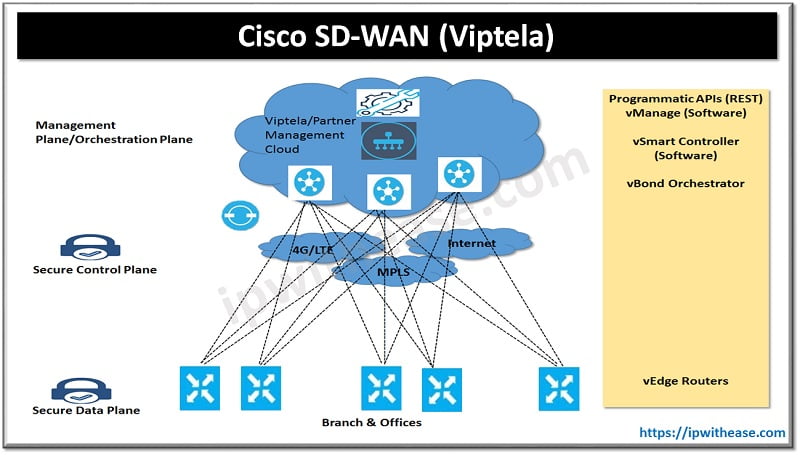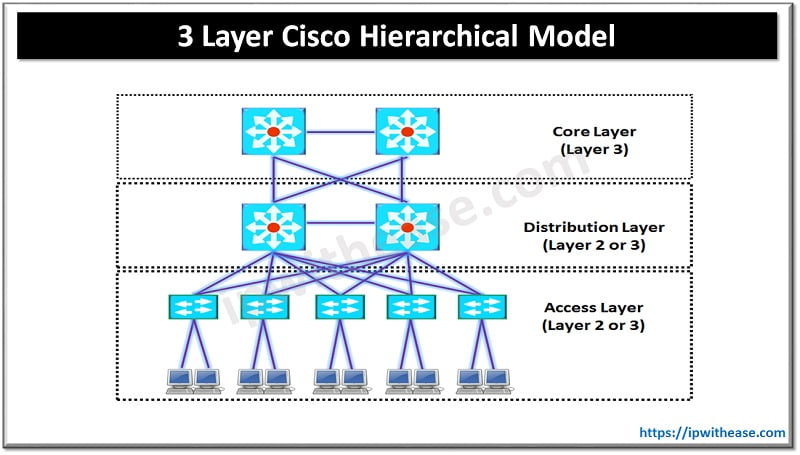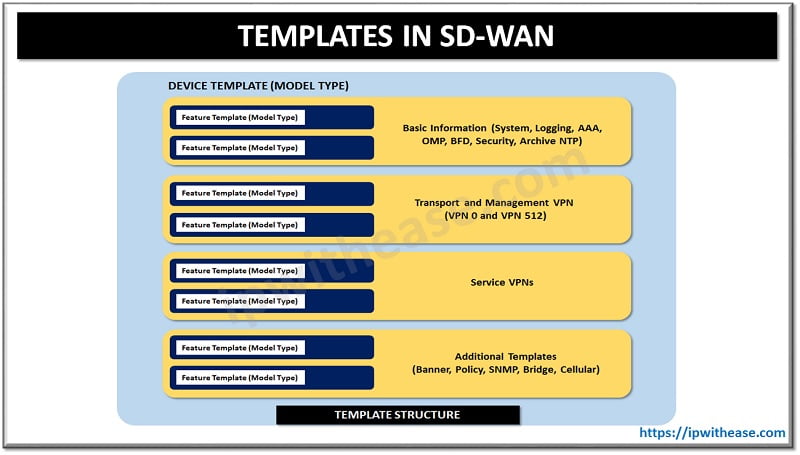Table of Contents
Cisco SD-WAN offers important business benefits to multi branch offices, including costs savings, simplified deployment and management, and increased agility. Using the principles of software defined networking (SDN), SD-WAN’s focuses on routing and prioritizing network connectivity to branch offices through the cloud, SD-WAN simplifies deployment and reducing the cost of hardware.

How does Cisco SD-WAN work?
SD-WAN uses centralized control engine to optimize traffic across the WAN. SD-WAN handles traffic based on priority, QoS and security requirements which are inline to the business ask. SD-WAN measure the quality of all connections for a specified data path and route traffic across the most optimized path. SD-WAN analysis the one-way packet loss, latency, jitter and available bandwidth on each path via vAnalytic.
Cisco SD-WAN Benefits
Below are the key benefits which incite businesses to adopt SD-WAN compared to other WAN technologies –
- Reduced network costs, lesser hardware requirements and nominal operational expenses.
- Increased agility with simplified management and Centralized and automatic Zero-Touch Provisioning and Plug-n-Play.
- More visibility on applications and security with in-depth analytics and troubleshooting functionality.
- Improved availability with simplified and faster failover.
- Better overall network performance and Security.
- Increased bandwidth at lower cost.
- Uniformity of policy control without human error.
Challenges with traditional WAN
At the same time there are challenges with traditional WAN, which further accentuate the need to move away from traditional WAN. These key issues are highlighted below –
- Inefficient Bandwidth Control
- Lack of application visibility
- Poor internet performance
- High cost of infrastructure and bandwidth
Cisco SD-WAN Architecture
Cisco SD-WAN uses an abstracted architecture for its network. In this architecture, the network is divided into the control plane and the forwarding plane. The SD-WAN architecture moves the control plane to a centralized location like an organization’s headquarters to manage SD-WAN devices for central management. By doing so network can be managed remotely without the need for an on-premises support.
- Data Plane: Cisco SD-WAN solution refer to data plane as a WAN edge. WAN edge could be CISCO vEdge router or CISCO XE SD-WAN router. Data plane device are deployed at branch, data center, Large campus, colocation facilities. The vEdge routers are placed at the perimeter of a site (such as remote offices, branch, campuses, and data centers) and provide connectivity among the sites. vEdge can be either hardware devices or software that runs as a virtual machine. vEdge router handles the transmission of data traffic.
- Management Plane: vManage manages the management plane in SD-WAN. It can be utilized for onboarding, provisioning, policy creation, S/W management, troubleshooting and monitoring. vManage also supports communication via REST and NETCONF. Each WAN edge will form a single management plane connection to vManage.
- Control Plane: vSmart provides control plane functionality. vSmart is responsible for implementing control plane policies, centralized data policy and VPN topologies. vSmart learns all its routing information. It is the centralized control engine of the SD-WAN solution, controlling the flow of data traffic throughout the network. The vSmart controller works with the vBond orchestrator to authenticate SD-WAN devices as they join the network and to orchestration connectivity among the vEdge routers.
- Orchestration Plane: vBond manages orchestration plane in SD-WAN. The vBond orchestrator automatically orchestrates connectivity between vEdge routers and vSmart controllers with secure tunnel.
SD-WAN in comparison to MPLS
There are quite a few differences between SD-WAN and MPLS. Multiprotocol Label Switching (MPLS) came before SD-WAN. MPLS is a label switching protocol for network traffic flow between two or more locations. MPLS operates between layers 2 and 3 (MPLS is considered at layer 2.5). It uses packet-forwarding technology and labels to make data forwarding decisions in network. The label is imposed on incoming packet between the Layer 2 (data link) and Layer 3 (network) headers.
SD-WAN Vendors
Listed below are some of key SD-Wan Vendors in market
In addition to Cisco Viptela, other major vendors in market are:
- Silver Peak
- Cisco Meraki
- Riverbed
- Velo Cloud
- Versa Network
- Nauge Network
Conclusion
Cisco SD-WAN has a lot of attractive features. SD-WAN is primarily cost-savings that results by eliminating an existing MPLS or leased-line WAN. SD-WAN solutions are offered by different vendors and have some fairly significant differences w.r.t feature and cost.
Traditional VPN solutions are very competitive in price w.r.t SD-WAN, however, SD-WAN renders additional features like redundancy, traffic engineering and fault tolerance in addition to application visibility which are limited in VPN setups.
Continue Reading:
ABOUT THE AUTHOR

You can learn more about her on her linkedin profile – Rashmi Bhardwaj



